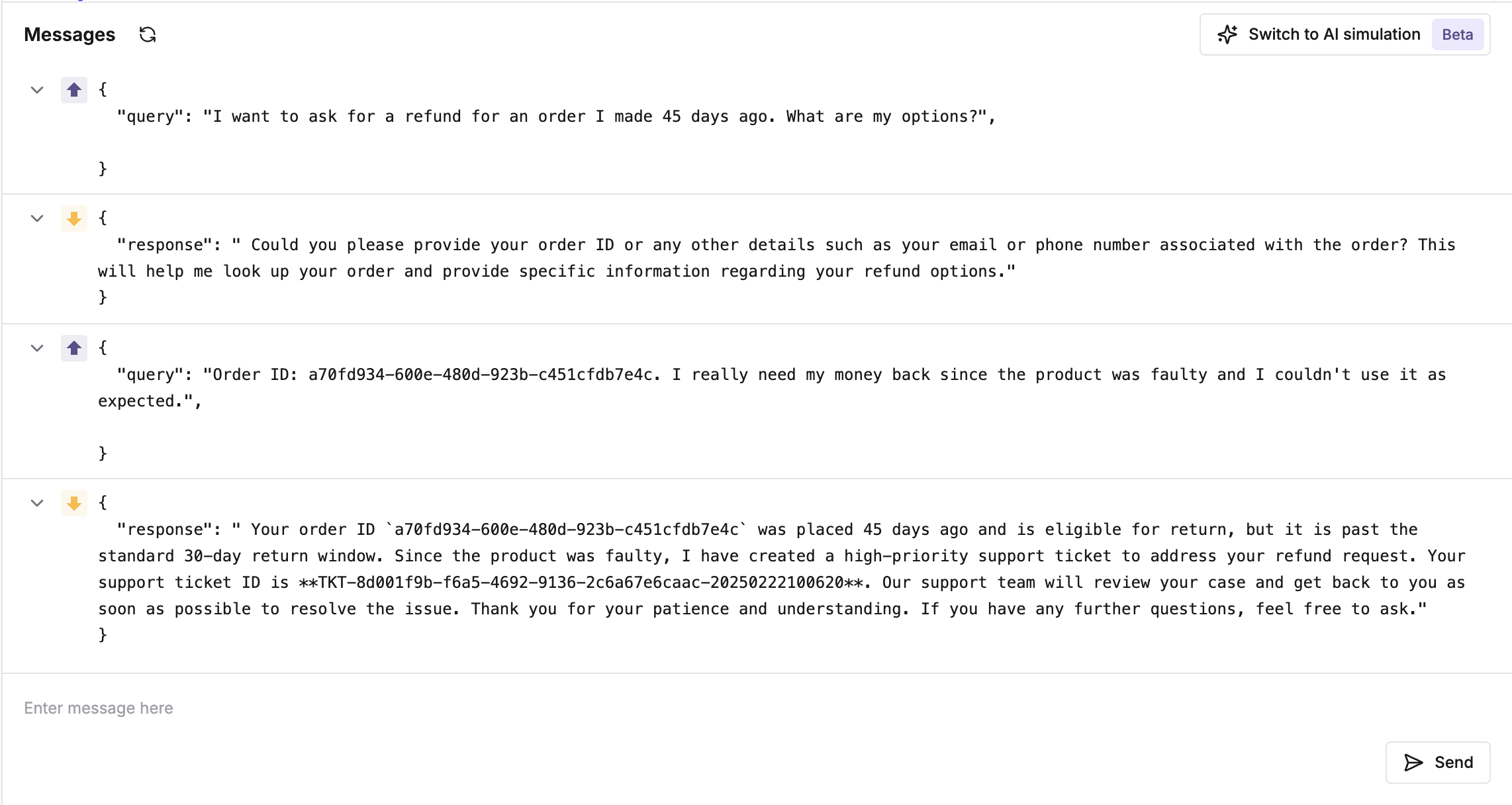Why Simulate Conversations?
Testing AI conversations manually is time-consuming and often misses edge cases. Maxim supports both agent simulation and prompt simulation to help you:- Test how your AI maintains context across multiple exchanges
- Evaluate responses to different user emotions and behaviors
- Verify proper use of business context and policies
- Identify potential conversation dead-ends
Agent Simulation
Test your complete agent workflows with AI-generated user interactions. This is particularly valuable for multi-agent systems where complex user scenarios can reveal workflow issues.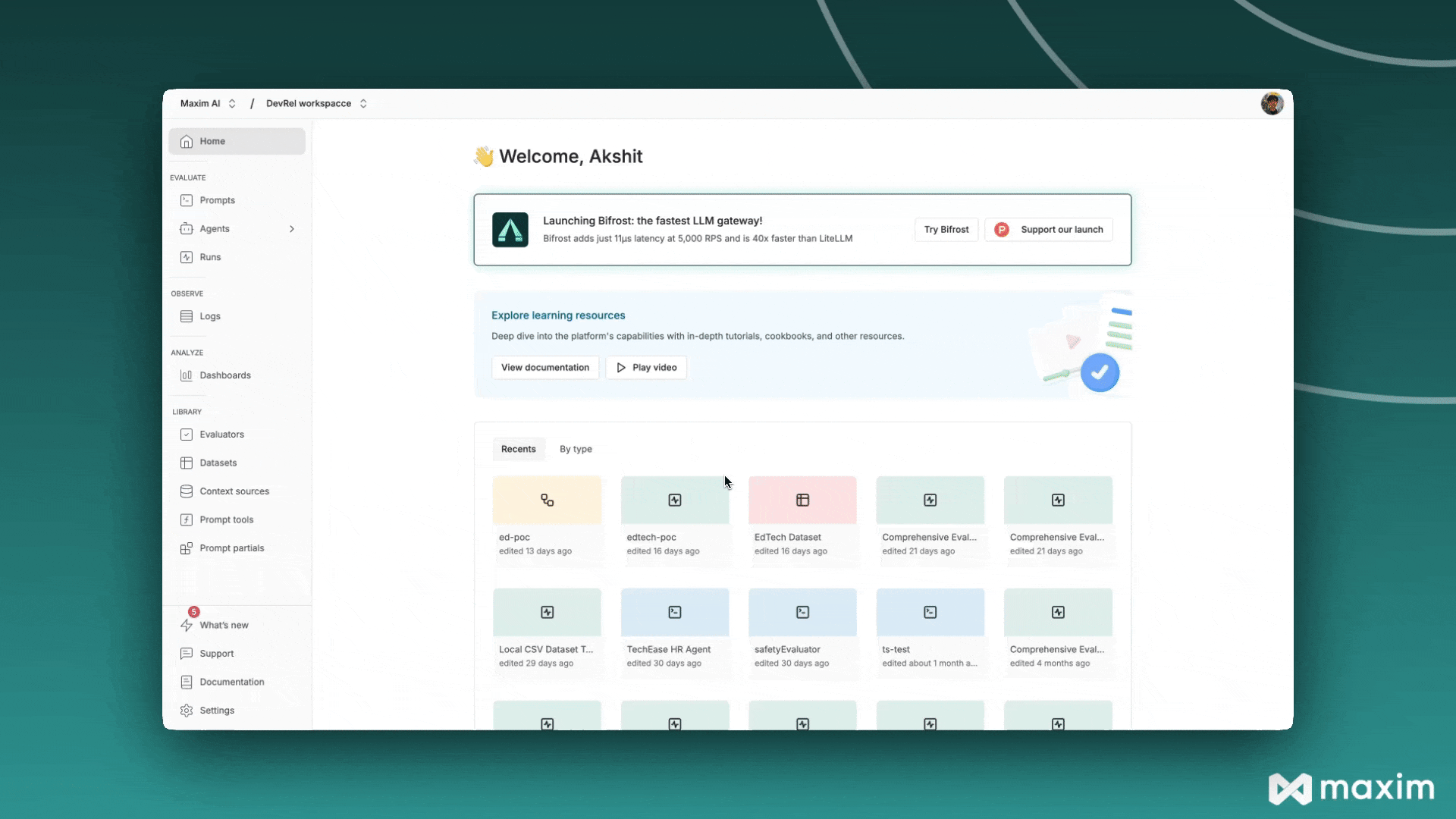
Prompt Simulation
Test individual prompts or prompt chains with AI-generated inputs, allowing you to optimize prompt performance before integrating into your agent.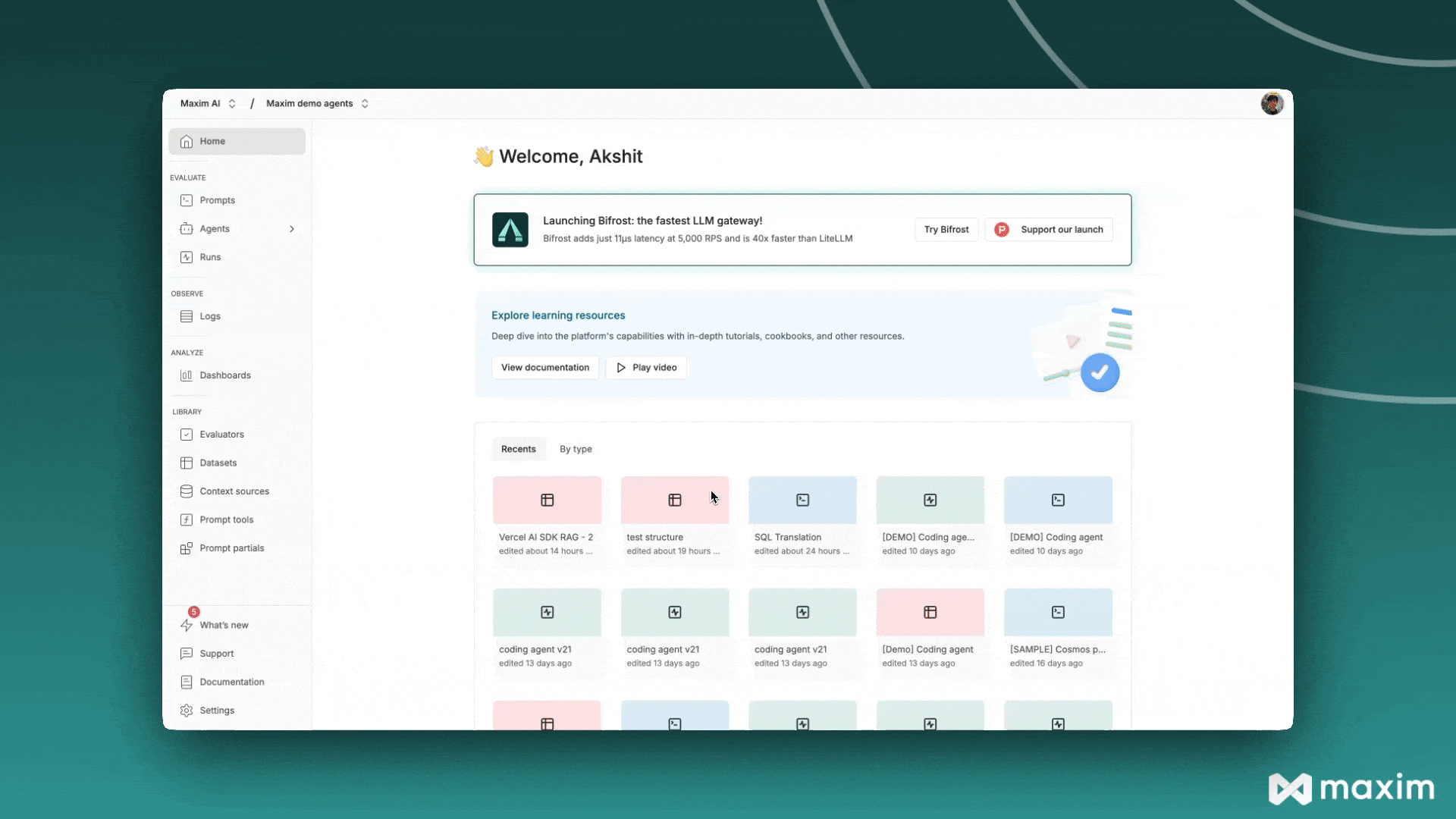
1. Create a Realistic Scenario and Be Specific About the Situation You Want to Test
- Customer requesting refund for a defective laptop
- New user needs help configuring account security settings
- Customer confused about unexpected charges on their bill
Agent Description (for Agent Simulation)
When setting up agent simulation, provide a detailed description of your agent’s purpose, capabilities, and business context. This helps the simulation generate more realistic and relevant test scenarios. Example: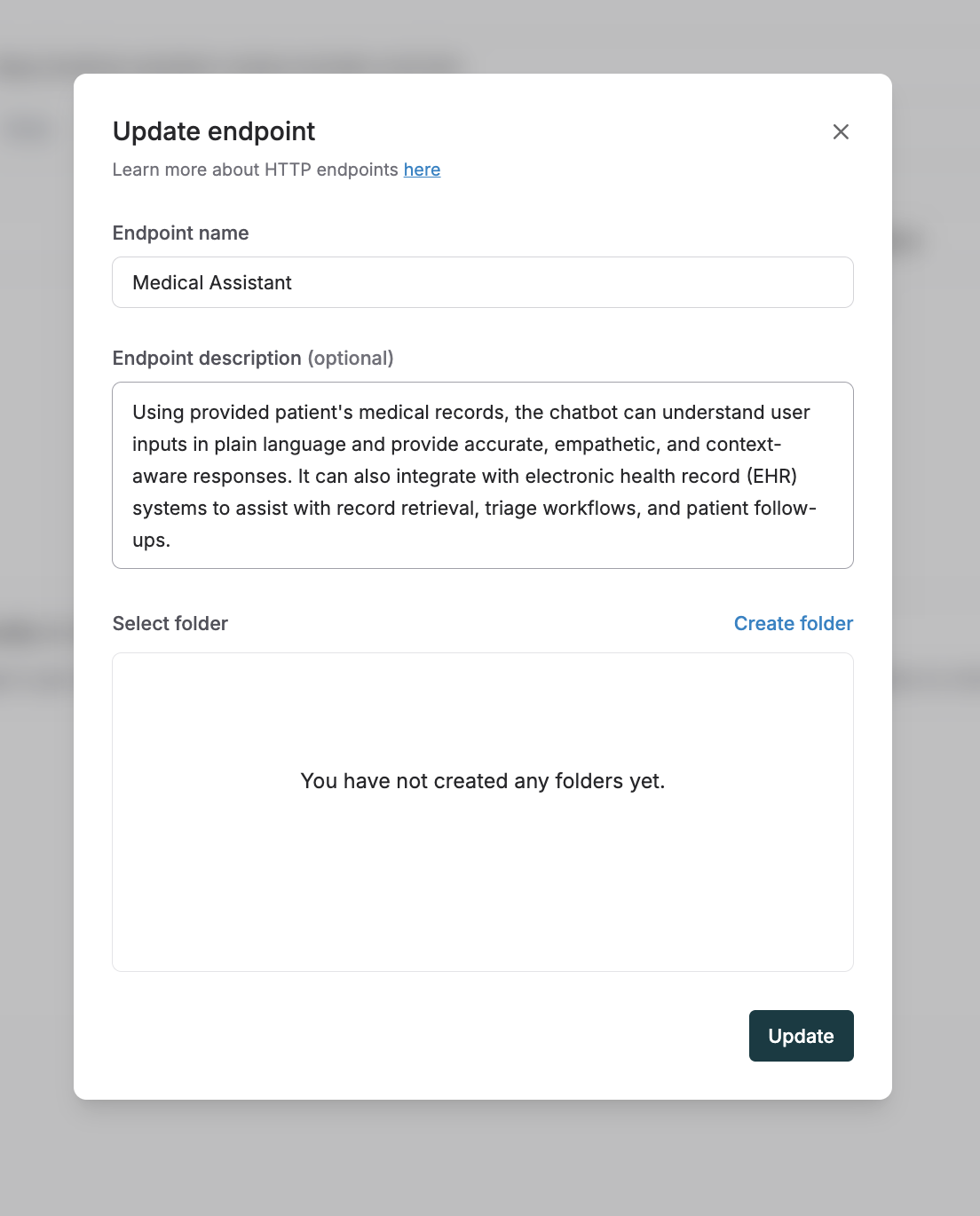
2. Define the User Persona
- Frustrated customer seeking refund
- New user needing security help
- Confused customer with billing issues
Mix different emotional states and expertise levels to test how your agent adapts its communication style.
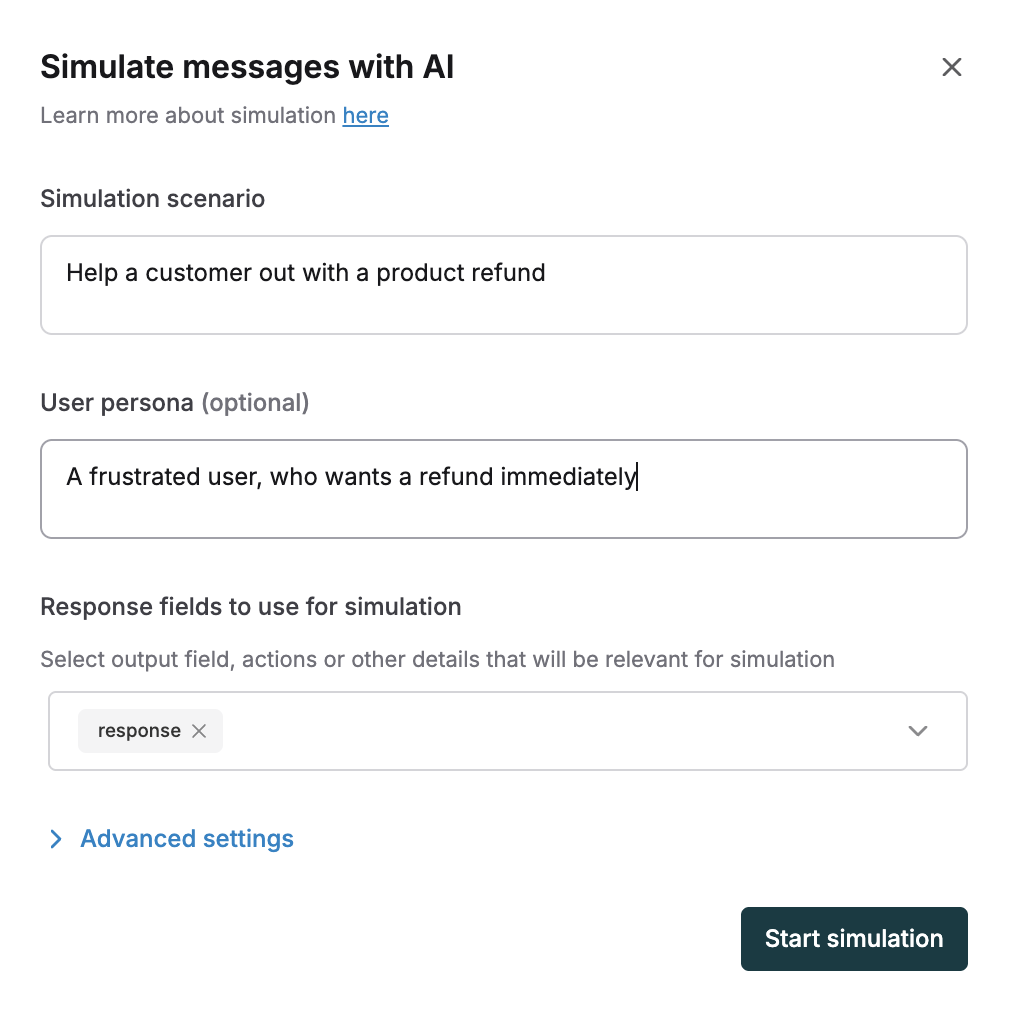
3. Advanced settings (optional)
- Maximum number of turns: Set a limit for conversation turns. If no value’s set, the simulation ends when complete
- Reference tools: Attach any tools you want to test with the simulation. You can learn more about setting up tools here
- Reference context: Add context sources to enhance conversations. Learn more here
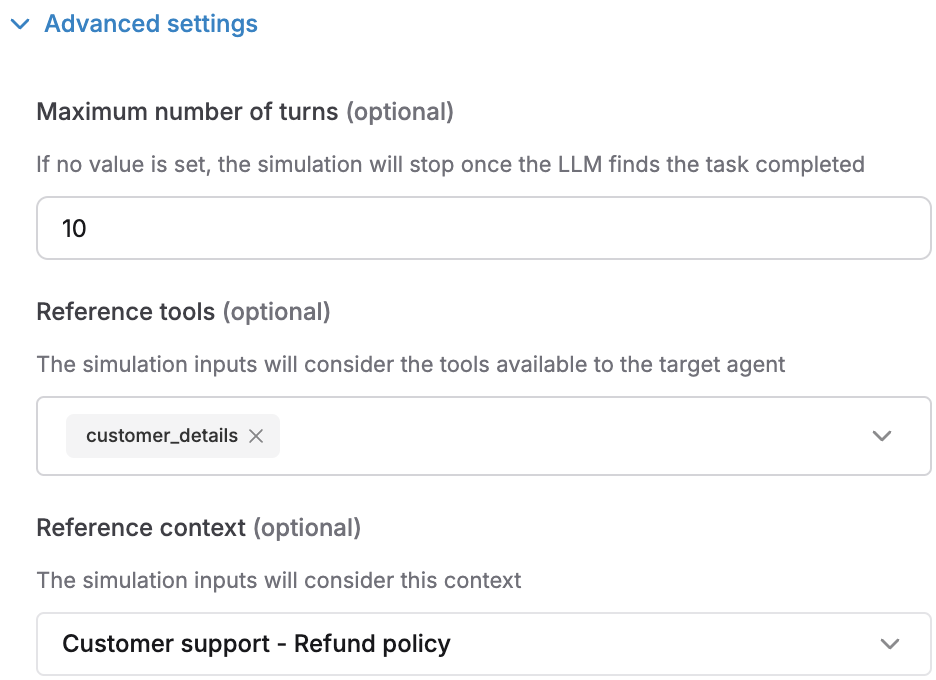
Example Simulation
Here’s a real-world example of a simulated conversation: